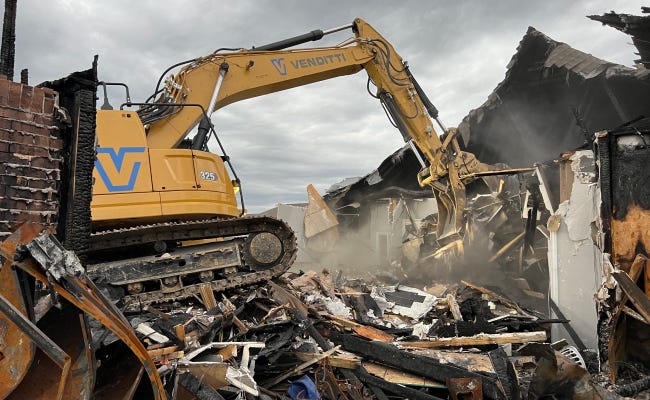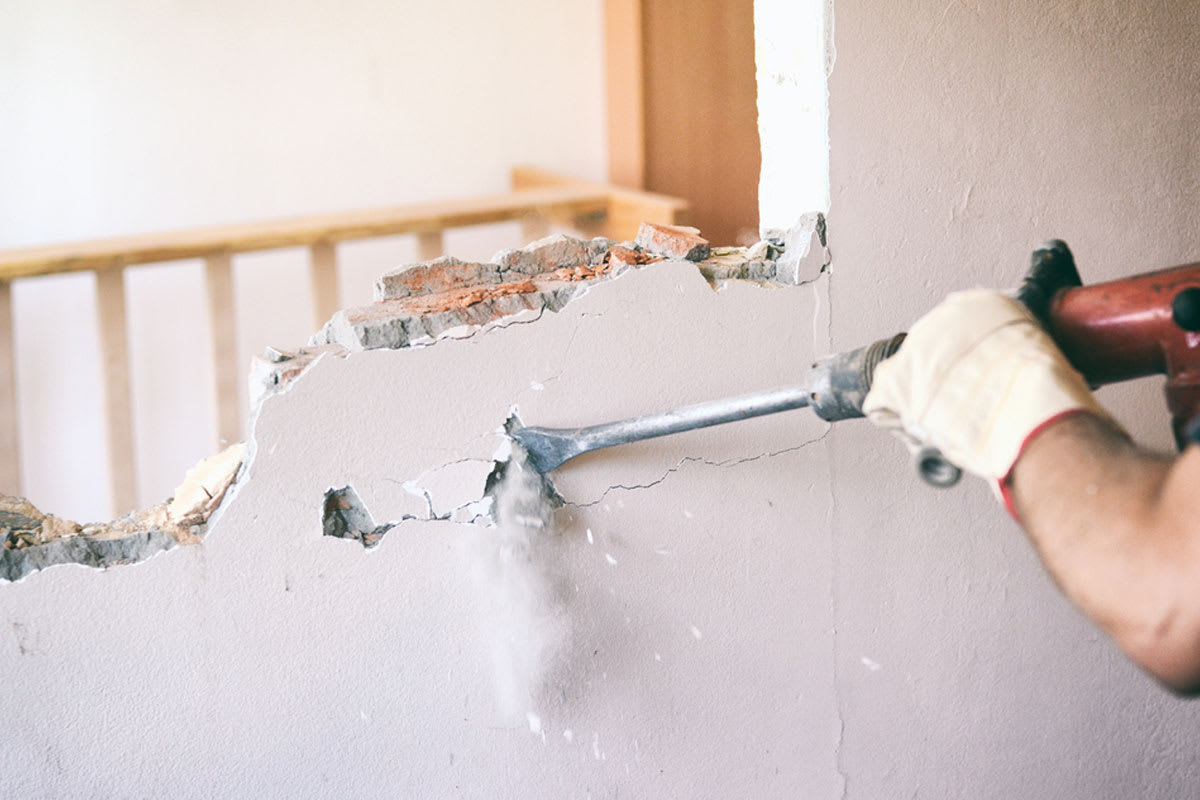Interior Demolition: Trick Considerations and Best Practices
Interior Demolition: Trick Considerations and Best Practices
Blog Article
The Ultimate Overview to Inside Demolition Techniques and Tools
Within the realm of interior restorations, the art of demolition is a crucial stage that needs accuracy, skill, and the right set of devices. Whether you are an experienced specialist or a Do it yourself fanatic, recognizing the intricacies of indoor demolition methods can make all the distinction in accomplishing a successful task result.
Necessary Indoor Demolition Tools
When carrying out interior demolition projects, having the appropriate devices is essential for effectiveness and security. Among the most crucial devices for interior demolition is the demolition hammer. This durable tool is created to appear difficult products like ceramic tile, drywall, and concrete. Its powerful hammering activity can rapidly knock down walls, floorings, and other frameworks. In addition, a crowbar is essential for getting rid of fixtures, trim, and various other products. Its take advantage of permits the simple removal of nails and other bolts without damaging the surrounding surfaces - interior demolition.
Its ability to make precise cuts in limited rooms makes it excellent for demolition job. On the whole, having these essential indoor demolition devices will dramatically enhance the effectiveness and safety of any kind of demolition task.

Safety Precautions Throughout Demolition

In addition, all workers included in the demolition process need to obtain appropriate training on the proper handling of tools and tools to lessen mishaps. It is necessary to protect the workspace by setting up obstacles and indications to stop unauthorized access - interior demolition. Routinely inspecting and keeping devices and devices can also add to a much safer working environment. By sticking to these security precautions, indoor demolition tasks can be executed efficiently while focusing on the well-being of all people included.
Techniques for Removing Wall Surfaces
Implementing correct safety preventative measures during indoor demolition projects is essential for creating a safe and secure workplace, and one essential facet of such projects includes understanding strategies for eliminating wall surfaces. One typically made use of method is hand-operated demolition, which calls for using standard hand tools such as sledgehammers, crowbars, and utility blades to very carefully take down the wall piece by item. This strategy allows for greater control over the demolition procedure, specifically in delicate areas where accuracy is essential.
For larger, much more intricate wall surfaces, mechanical demolition might be essential. This involves making use of hefty equipment like bulldozers or excavators to knock down walls effectively. Nonetheless, it is essential to make sure that the architectural honesty of the structure is not endangered throughout mechanical demolition.
Another technique for removing walls is deconstruction, where the wall surface is dismantled in a means that maintains multiple-use products. This lasting technique is eco-friendly and can also assist minimize disposal expenses. Whichever method is employed, it is important to comply with appropriate safety protocols and think about the structural implications of wall elimination to make certain an effective interior demolition project.
Removing Floor Covering Like a Pro
Successfully getting rid of floor covering during interior demolition calls for the appropriate tools and strategies to make certain a smooth and effective process. The very first step in eliminating flooring is to get rid of the area of any furnishings or obstacles. Next off, recognize the sort get more of floor covering to identify the appropriate elimination technique. For wood or laminate floor covering, start useful site by getting rid of the baseboards and then utilize a flooring scrape to lift and separate the planks. Carpeting removal entails cutting the carpeting into convenient sections and rolling it up for disposal. For floor tile or plastic flooring, a carve or floor scrape can be used to tear up the tiles or sheets. It's important to use safety gear such as gloves, safety glasses, and a mask to stop injuries and exposure to dust and particles. Additionally, having a dumpster or assigned disposal location prepared for the removed flooring products is crucial for keeping a tidy workplace. By complying with these techniques and making use of the right tools, eliminating floor covering like a pro can be accomplished efficiently and properly.
Correct Garbage Disposal Methods
After efficiently getting rid of floor covering utilizing the suitable devices and methods, the next essential step in the interior demolition procedure is carrying out appropriate waste disposal methods. Correct waste disposal is crucial for preserving a clean and secure work setting during and after demolition.

Specialists must stick to local policies concerning waste disposal to prevent fines and penalties. Making use of specialist waste monitoring solutions can simplify the disposal procedure and make sure conformity with ecological guidelines. By applying correct garbage disposal approaches, indoor demolition jobs can be completed effectively and hop over to these guys sustainably.
Conclusion
In final thought, indoor demolition needs the use of necessary tools and rigorous security preventative measures to guarantee a effective and risk-free process. By adhering to these guidelines, indoor demolition can be finished successfully and with marginal dangers.
One of the most critical tools for indoor demolition is the demolition hammer (interior demolition). In general, having these essential indoor demolition devices will significantly improve the performance and safety of any type of demolition task
Efficiently eliminating flooring during indoor demolition calls for the proper tools and methods to make certain a smooth and successful procedure.After efficiently getting rid of floor covering using the suitable devices and strategies, the next important action in the indoor demolition process is carrying out correct waste disposal methods.In conclusion, interior demolition needs the usage of essential tools and strict security preventative measures to guarantee a effective and secure process.
Report this page